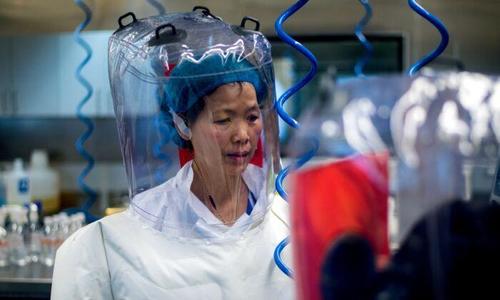Yet another piece of the pandemic puzzle has fallen into place – after being hidden in plain sight until it was wiped from the Wuhan Institute of Virology’s (WIV) website.
Unearthed by The National Pulse‘s Natalie Winters, a Nov. 2017 report titled (no really): “Bats in China carry all the ingredients to make a new SARS virus,” describes how researchers at the WIV had identified ‘all the genes to make a SARS coronavirus similar to the epidemic strain,’ among 11 new strains of viruses collected in horseshoe bats.

“After five years of surveying bats in a cave in southern China’s Yunnan Province, Zhengli Shi and colleagues discovered 11 new strains of SARS-related viruses in horseshoe bats (especially in Rhinolophus sinicus). Within the strains, the researchers found all the genes to make a SARS coronavirus similar to the epidemic strain, says Shi, a virologist at the Wuhan Institute of Virology, Chinese Academy of Sciences.
These new strains are more similar to the human version of SARS than were previously identified bat viruses, says Matthew Frieman, a virologist at the University of Maryland in Baltimore. -PLOS Pathogens
More via The National Pulse:
The article, which was recently wiped from the Wuhan Institute of Virology’s website, also notes that Shi and her colleagues found that “several of the strains” could grow in human cells.
“By analyzing the new viruses’ complete genetic makeup, Shi and her colleagues retraced the steps that might have given rise to the original SARS virus. A few spots in the viruses’ DNA seem particularly prone to rearrangement, so remixing happens often. The study suggests that recombination between viruses has shaped the evolution of SARS, says Baric.
Several of the strains could already grow in human cells, Shi’s team found. That indicates “there’s a chance that the viruses that exist in these bats could jump to people,” Frieman says. “Whether they will or not is anybody’s guess.”

Also in 2017, a subagency of the National Institutes of Health (NIH) – headed by Dr. Anthony Fauci – resumed funding a controversial grant to genetically modify bat coronaviruses in Wuhan, China without the approval of a government oversight body, according to the Daily Caller. This comes after a temporary suspension of federal funding in 2014 for gain-of-function research by which bat COVID was genetically manipulated to be more transmissible to humans. Four months prior to that decision, the NIH effectively shifted this research to the Wuhan Institute of Virology (WIV) via a grant to nonprofit group EcoHealth Alliance, headed by Peter Daszak.
Notably, the WIV “had openly participated in gain-of-function research in partnership with U.S. universities and institutions” for years under the leadership of Dr. Shi ‘Batwoman’ Zhengli, according to the Washington Post‘s Josh Rogin.
In 2017, however, the “Potential Pandemic Pathogens Control and Oversight (P3CO) Framework was formed within the Department of Health and Human Services (HHS),” which was tasked with evaluating the risks involved with enhancing dangerous pathogens, as well as whether proper safeguards are in place, before a grant into ‘gain-of-function’ or similarly risky research can be issued.
Fauci’s National Institute of Allergy and Infectious Diseases (NIAID) – the subagency which funded EcoHealth – didn’t think the grant needed review, and resumed their relationship with Daszak without flagging it for the P3CO committee, an NIH spokesperson told the Caller.

Or – and just hear us out, a random bat infected a yet-to-be determined intermediary animal species, which nobody has been able to identify after 18 months of searching, which then infected humans in Wuhan – coincidentally home to the bat coronavirus lab, before anywhere else in the world.
Join: 👉 https://t.me/acnewspatriots
The opinions expressed by contributors and/or content partners are their own and do not necessarily reflect the views of AC.NEWS
Disclaimer: This article may contain statements that reflect the opinion of the author. The contents of this article are of sole responsibility of the author(s). AC.News will not be responsible for any inaccurate or incorrect statement in this article www.ac.news websites contain copyrighted material the use of which has not always been specifically authorized by the copyright owner. We are making such material available to our readers under the provisions of “fair use” in an effort to advance a better understanding of political, health, economic and social issues. The material on this site is distributed without profit to those who have expressed a prior interest in receiving it for research and educational purposes. If you wish to use copyrighted material for purposes other than “fair use” you must request permission from the copyright owner. Reprinting this article: Non-commercial use OK. If you wish to use copyrighted material for purposes other than “fair use” you must request permission from the copyright owner.
Disclaimer: The information and opinions shared are for informational purposes only including, but not limited to, text, graphics, images and other material are not intended as medical advice or instruction. Nothing mentioned is intended to be a substitute for professional medical advice, diagnosis or treatment.






















![Tucker Carlson Released an ALARMING Message … [Published Yesterday]](https://ac.news/wp-content/uploads/2024/04/download-3-120x86.jpg)























